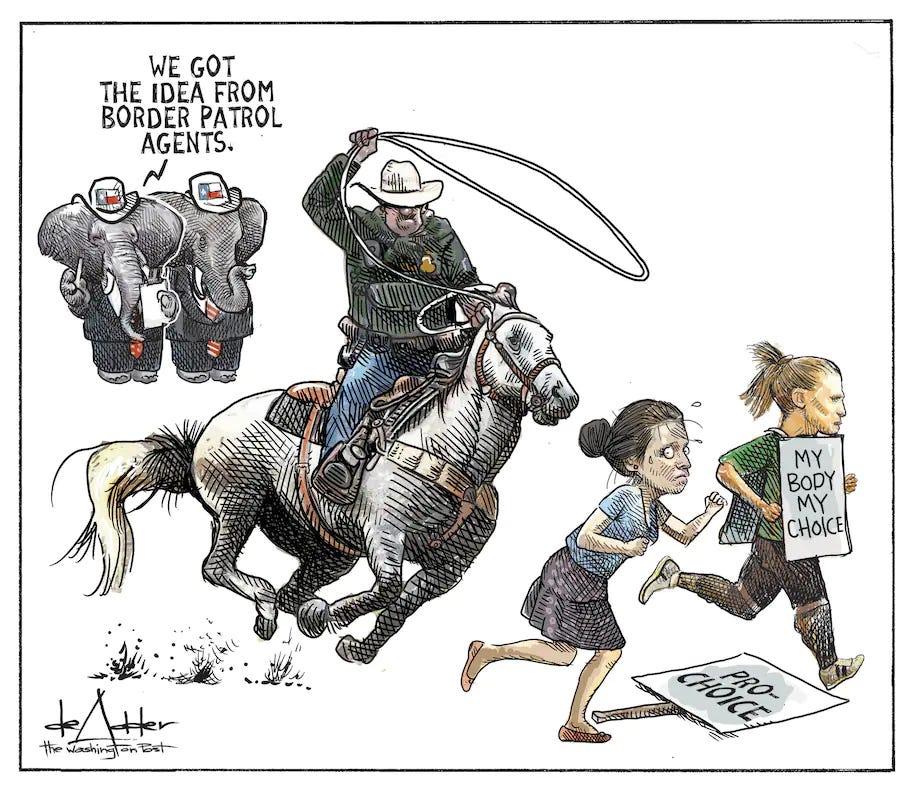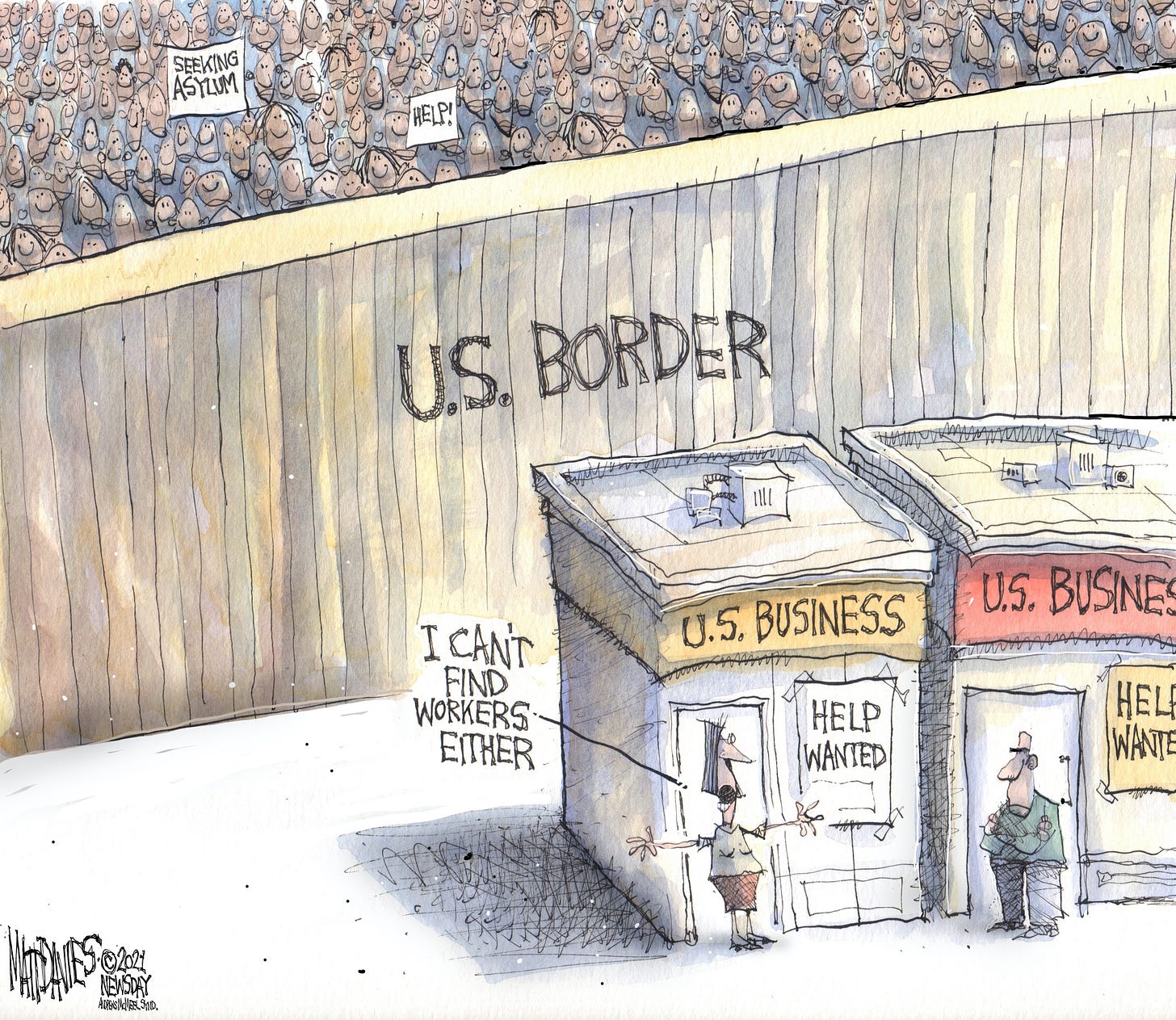Blinded by the Type: Writing a Novel at Springsteen House
He'd just made the covers of Time and Newsweek--and before that, Crawdaddy. But now I had the run of his house for ten days.
Another excerpt from my memoir-in-progress, plus three live Bruce songs/videos from that very month. (Previous chapters on Bruce here and here.) First, a trio of cartoons. Enjoy, share, comment, subscribe (it’s still free).
Can’t Start a Fire Without a Spark (or: Typing in the Dark)
In the summer of 1975, as Bruce Springsteen finally finished his Born to Run album, Crawdaddy prepared what would be the first cover story anyone dared to publish on the still little-known Jersey rocker, written by editor Peter Knobler. We had produced the equally daring first magazine feature on Springsteen—8000 words at that—back in January 1973 after meeting him at a gig in, of all places, Sing Sing Prison, so this brought us full circle.
In between we attended dozens of Bruce and E Street Band shows, and hung out numerous times. The new issue was timed for August 1975 just as Born to Run emerged. He’d set the stage with three nights of shows at the best club in New York, the Bottom Line, and his office put me on the comp list for all six shows. It was the hottest ticket in town, if not in the whole USA, so you can imagine the temptation to sell one--but, no way, not when I could not only enjoy the gig but go backstage between shows.
By this point, Bruce finally commanded a separate dressing room and a staffer even kept out friends some of the time. Still, it was wonderful to visit, and observe, him right on the cusp of mega-fame. He remained humble, laughing at the absurdity of the unexpected media glare and unreasonable expectations. Time and Newsweek wouldsoon put him on their covers—earning him, for awhile, scorn from some quarters for (allegedly) stage-managing the whole phenomenon. Underrated for so long, he was now (allegedly) “over-hyped.” Others, who had been charter members of Bruce Nation and pretty much had him to themselves for so long now feared that he was no longer “our Brucie.”
This was true enough, but shortly after the Bottom Line shows, when he was about to leave for his first big national tour, I asked if I might stay at his modest house on a hillside in Atlantic Highlands, N.J., overlooking Sandy Hook, for a week or so to write much of a novel, Out of It, I’d started sketching. Surprisingly, he said, “sure,” perhaps happy to have someone to look after the place now that there was a chance that fans might come around looking for him or maybe break in to steal a guitar pick, a signed lyric sheet or iconic leather jacket.
And so it came to pass—exactly 46 years ago this week. A good samaritan/friend dropped me off, but I would have no wheels for the next ten days. Bruce’s house, with a little deck overlooking the water, was comfortable, fairly clean, but sparsely furnished. The TV near the foot of his (my) bed might have been a 10-incher. Oddly, there were no albums next to the little stereo. It was always a kick to hear a local radio station play one of his songs—suddenly, quite often—and listen right from the home of the hits.
Bruce obviously never cooked for himself nor ate dinner at home. The only thing in his cupboard: a box of cereal, one bowl, and one spoon—no other silverware. In the refrigerator, not a single item, not even a quart of (sour) milk, or coffee, until I arrived with a few groceries. On a table in the living room: a rhyming dictionary (no shame in that).
Out in California, Sara Jane Moore took a shot at President Gerald Ford in San Francisco, just two weeks after Lynette "Squeaky" Fromme, crazed member of the Manson Family, tried to do the same in Sacramento. I watched the coveage on that little TV screen (there wasn’t much else to do). Meanwhile, Bruce on tour was wailing….”She’s the One.”
Quickly, I established a routine. During the day I typed dozens of fresh pages on my portable Olympic in a dusty, shed-like building on the edge of the property. It had no lights, but did provide a desk and chair, a working fireplace and a dart board, which came in handy when I needed to blow off writer’s block, boredom or anxiety. Southside Johnny Lyon and his sharp-tongued wife Betty came to visit a couple of times, bearing food, beer, and toiletries. So did drummer Max Weinberg’s girlfriend Karen, who lived next door, just checking in--yes, I worried that he’d hear about that and hit the ceiling.
When I got lonely, I wished a groupie or any other sort of fan might stop by, not that anyone would mistake me for The Boss. No one did. The phone never rang. I don’t know where his mail was going but it did not arrive at the house. No package deliveries. With few distractions, my writing, down in that shed, went very well. So did Bruce’s tour and, well, the rest of his career.
I never did quite finish the novel, though I still have it, in a box, as typed original pages, not a Word file. One might call it Stillborn to Run. A few months later, Southside, and then Bruce (in his only NYC appearance that year), co-starred at Crawdaddy’s fabled 10th anniversary party. We swept Bruce and band in a softball doubleheader the following year, with Miami Steve in center carrying a glass of wine and Brucie at 2B and on the mound. More on that some day.
Now a couple more tunes from the autumn 1975 London concert at the Hammersmith Odeon….”Backstreets” and “Jungleland.”
“Essential daily newsletter.” — Charles P. Pierce, Esquire
“Incisive and enjoyable every day.” — Ron Brownstein, The Atlantic
“Always worth reading.” — Frank Rich, New York magazine, Veep and Succession
Greg Mitchell is the author of a dozen books, including the bestseller The Tunnels (on escapes under the Berlin Wall), the current The Beginning or the End (on MGM’s wild atomic bomb movie), and The Campaign of the Century (on Upton Sinclair’s left-wing race for governor of California), which was recently picked by the Wall St. Journal as one of five greatest books ever about an election. His new film, Atomic Cover-up, just had its world premiere and is drawing extraordinary acclaim. For nearly all of the 1970s he was the #2 editor at the legendary Crawdaddy. Later he served as longtime editor of Editor & Publisher magazine. He recently co-produced a film about Beethoven’s Ninth Symphony.





